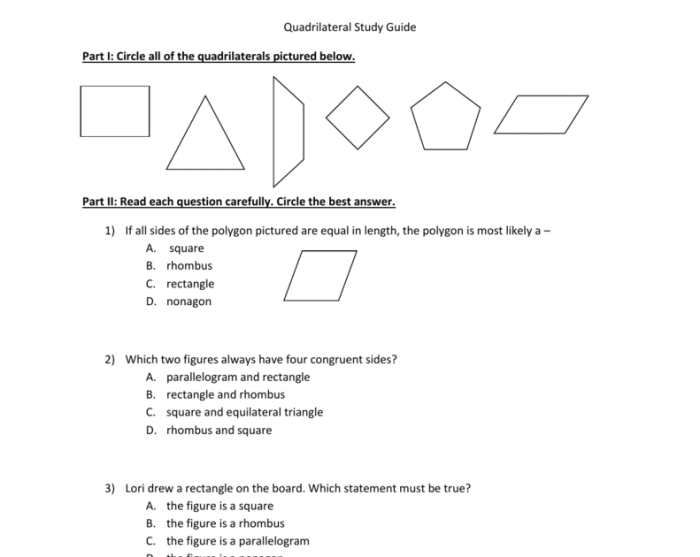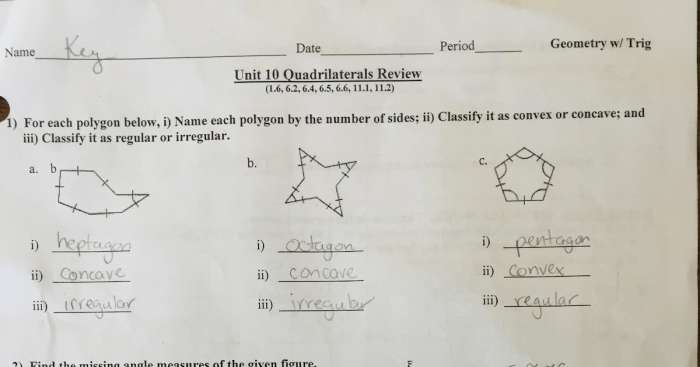Unit 7 Polygons and Quadrilaterals Homework 2 Answer Key presents a thorough exploration of polygons and quadrilaterals, their properties, and their applications in real-world contexts. This guide delves into the intricacies of these geometric shapes, providing a comprehensive understanding of their characteristics, relationships, and practical implications.
Throughout this guide, we will examine the definitions and properties of polygons and quadrilaterals, explore the angle properties of quadrilaterals, and investigate the concepts of perimeter and area in relation to these shapes. We will also delve into the classification and properties of special quadrilaterals, such as parallelograms, rhombuses, rectangles, and squares.
Polygons and Quadrilaterals

Polygons and quadrilaterals are fundamental geometric shapes with distinct properties and applications in various fields. Understanding their characteristics and relationships is crucial for a comprehensive grasp of geometry.
Definitions and Properties of Polygons and Quadrilaterals: Unit 7 Polygons And Quadrilaterals Homework 2 Answer Key

A polygon is a closed figure formed by three or more line segments. Its properties include the number of sides (n), the number of angles (n), and the sum of its interior angles, which is (n-2) × 180 degrees.
A quadrilateral is a specific type of polygon with four sides. It can be classified into various types based on its specific properties, including squares, rectangles, trapezoids, and parallelograms.
Angle Properties of Quadrilaterals
The interior angles of a quadrilateral add up to 360 degrees. The exterior angles, formed by extending each side, also add up to 360 degrees.
Perimeter and Area of Quadrilaterals, Unit 7 polygons and quadrilaterals homework 2 answer key
The perimeter of a quadrilateral is the sum of the lengths of its four sides. The area of a quadrilateral depends on the specific type of quadrilateral and its dimensions.
Classification and Properties of Special Quadrilaterals
Quadrilaterals can be classified into special types based on their properties:
- Parallelogram: Opposite sides are parallel and equal in length.
- Rhombus: All sides are equal in length.
- Rectangle: Opposite sides are parallel and equal in length, and all angles are right angles.
- Square: A rectangle with all sides equal in length.
Applications of Quadrilaterals in Real-World Contexts
Quadrilaterals have numerous applications in real-world contexts, including:
- Architecture: Buildings and structures often incorporate quadrilaterals in their design.
- Engineering: Bridges and other structures utilize quadrilaterals for stability and strength.
- Design: Quadrilaterals are used in logos, patterns, and other design elements.
Key Questions Answered
What is the definition of a polygon?
A polygon is a closed two-dimensional figure with three or more straight sides.
What are the different types of quadrilaterals?
The different types of quadrilaterals include squares, rectangles, trapezoids, parallelograms, and rhombuses.
How do you calculate the area of a rectangle?
To calculate the area of a rectangle, multiply the length by the width.
